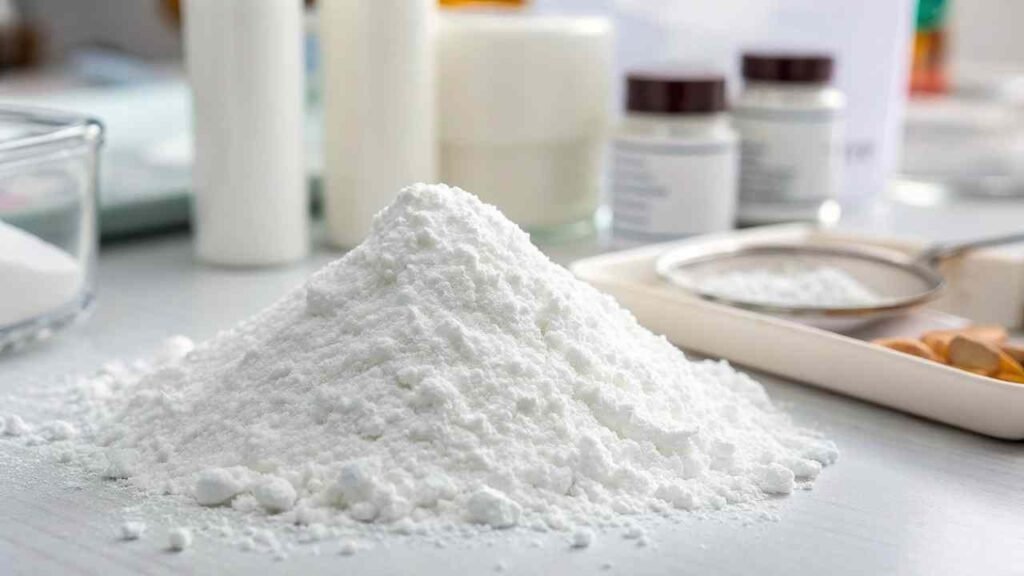See 'dextrose' on ingredient lists and wonder what it is? Confused about why it's in so many foods? Let's clear up the confusion about this common ingredient.
Dextrose is simply D-glucose, a basic sugar usually made from corn starch. Foods contain it for sweetness, texture, browning, fermentation aid, shelf life, and energy.
Understanding what dextrose is and why it's used helps everyone make better sourcing and formulation decisions. Let's quickly cover what dextrose is and why it's used.
How is dextrose produced commercially?
Ever wonder how that fine white dextrose powder gets made? Curious about the journey from plant to food ingredient? Let's look at how it's produced industrially.
Dextrose is made by enzymatically breaking down starch (usually corn starch) into glucose. This glucose syrup is then heavily purified, crystallized, and dried into powder.
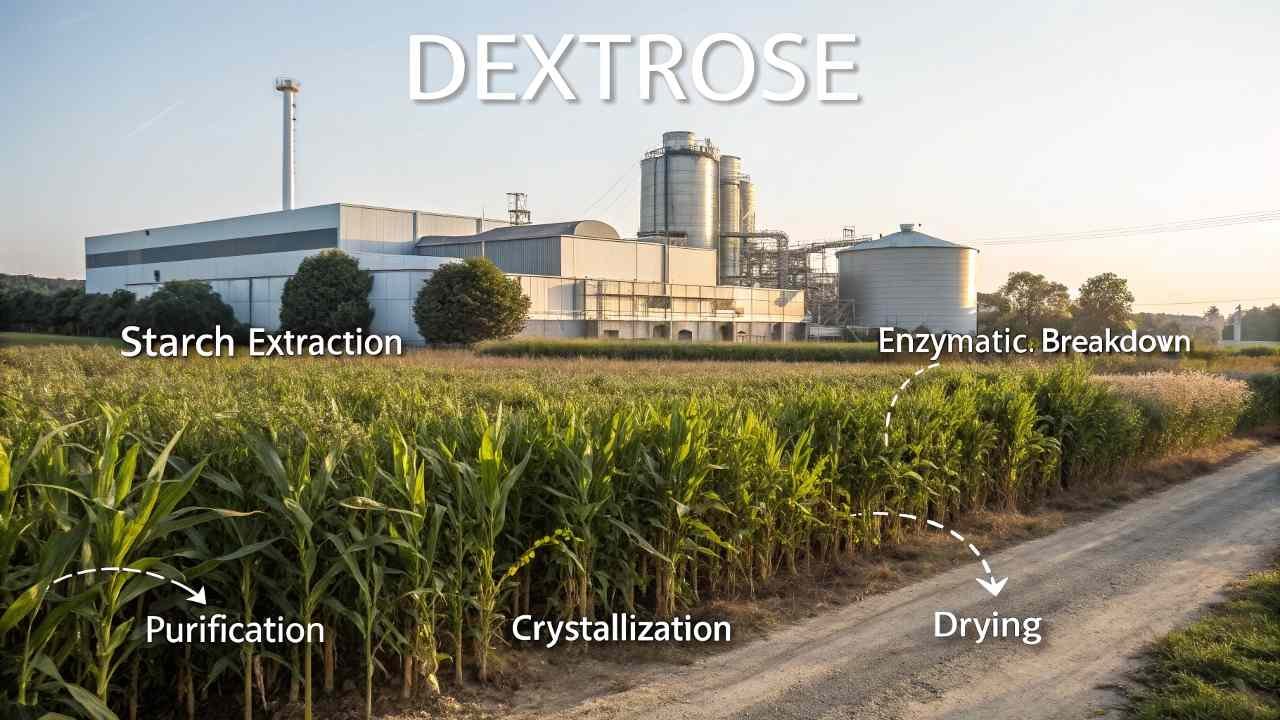
| Stage | Basic Action | Result |
|---|---|---|
| Starch Source | Prepare corn starch slurry | Raw material ready |
| Hydrolysis | Use enzymes to break down starch | High-glucose syrup |
| Purification | Filter, carbon treat, ion exchange | Pure glucose syrup |
| Crystallization | Cool syrup to form crystals | Solid dextrose crystals |
| Drying | Remove moisture | Final powder |
This multi-step process transforms simple corn starch1 into the highly pure, functional dextrose powder2 used widely in the food industry. Ensuring each step meets specifications is key to delivering the top quality FINETECH promises.
Is dextrose considered a 'natural' or 'artificial' ingredient?
Is dextrose 'natural' like fruit sugar, or man-made? Where does it fit? Let's clarify its status.
Dextrose comes from natural starch but needs significant processing (enzymes, purification). It's usually seen as 'natural derived' – not strictly natural, but not artificial either.

The 'natural' label is tricky. Dextrose (D-glucose) is found in nature, and it starts from natural corn starch. However, the multi-step industrial process using enzymes3, extensive filtering, and crystallization is far beyond minimal processing.
Because of this significant processing, it’s often not considered ‘natural’ like raw honey. But since the molecule exists in nature and the source is natural, it’s not ‘artificial’ like synthetic sweeteners. ‘Natural derived’ or ‘from natural source’ is a common middle ground. Regulations vary globally, but ‘dextrose’ or ‘corn sugar’ are clear labels. It’s less processed than High-Fructose Corn Syrup (HFCS)4, which involves an extra enzymatic step.
| Aspect | Dextrose Detail | Classification Takeaway |
|---|---|---|
| Origin | Natural Starch (Corn) | Starts natural |
| Molecule | D-Glucose (found in nature) | Molecule is natural |
| Process | Enzymes, Heavy Purification | Significant processing |
| Common View | 'Natural Derived' | Not purely 'natural' |
| vs Artificial | Not chemically synthesized | Not 'artificial' |
So, while dextrose isn't artificial, the significant processing means calling it purely 'natural' can be debated. "Derived from corn" or simply "dextrose" are often the most accurate descriptions on an ingredient list.
What specific functions does dextrose perform in processed foods?
Why is dextrose in bread, ice cream, and sauces? What jobs does it do? Let's list its key functions beyond just sweetness.
Dextrose adds mild sweetness, helps foods brown nicely (Maillard reaction), improves texture (like smoothness in ice cream), feeds yeast for fermentation, and helps preserve foods.
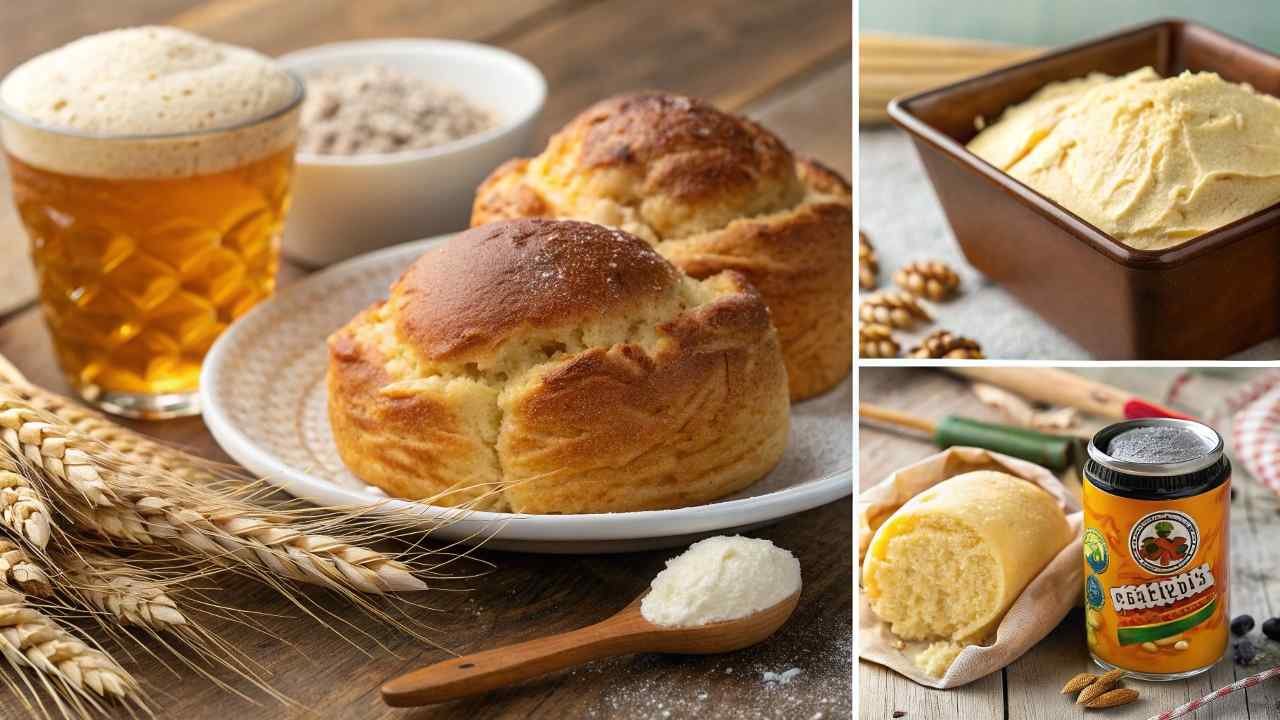
Dextrose is a workhorse ingredient with many technical roles:
| Function | Mechanism | Examples of Food Products | Benefit |
|---|---|---|---|
| Sweetness | Binds to sweet taste receptors | Beverages, candies, baked goods, sauces | Provides palatable taste, balances flavors |
| Browning (Maillard) | Reacts with amino acids under heat | Bread crust, cookies, roasted meats, fries | Desirable color and flavor development |
| Texture (Freezing Point) | Lowers freezing point of water effectively | Ice cream, frozen desserts | Smoother texture, less ice crystallization |
| Texture (Crystallization) | Interferes with sucrose crystallization | Candies, frostings, jams | Prevents grittiness, maintains smooth texture |
| Fermentation Fuel | Easily metabolized by yeast | Bread, rolls, beer | Aids leavening, speeds up fermentation |
| Moisture Control (Aw) | Binds water, reduces water activity | Baked goods, jams, cured meats | Extends shelf life, maintains softness |
| Body / Mouthfeel | Increases viscosity, contributes solids | Beverages, sauces, ice cream | Provides substance, improves perceived quality |
| Bulking Agent | Adds volume and mass | Reduced sugar/fat products, powdered mixes | Replaces bulk, maintains structure |
The versatility of dextrose, stemming from these varied functions, makes it an indispensable tool for food technologists and a consistently demanded product for suppliers like us at FINETECH.
How does dextrose differ chemically from table sugar (sucrose)?
Are dextrose and regular sugar the same thing chemically? No, they differ significantly. Let's see how.
Dextrose is a monosaccharide (a single sugar unit, C6H12O6), specifically D-glucose. Table sugar (sucrose) is a disaccharide (C12H22O11), made of one glucose unit linked to one fructose unit.
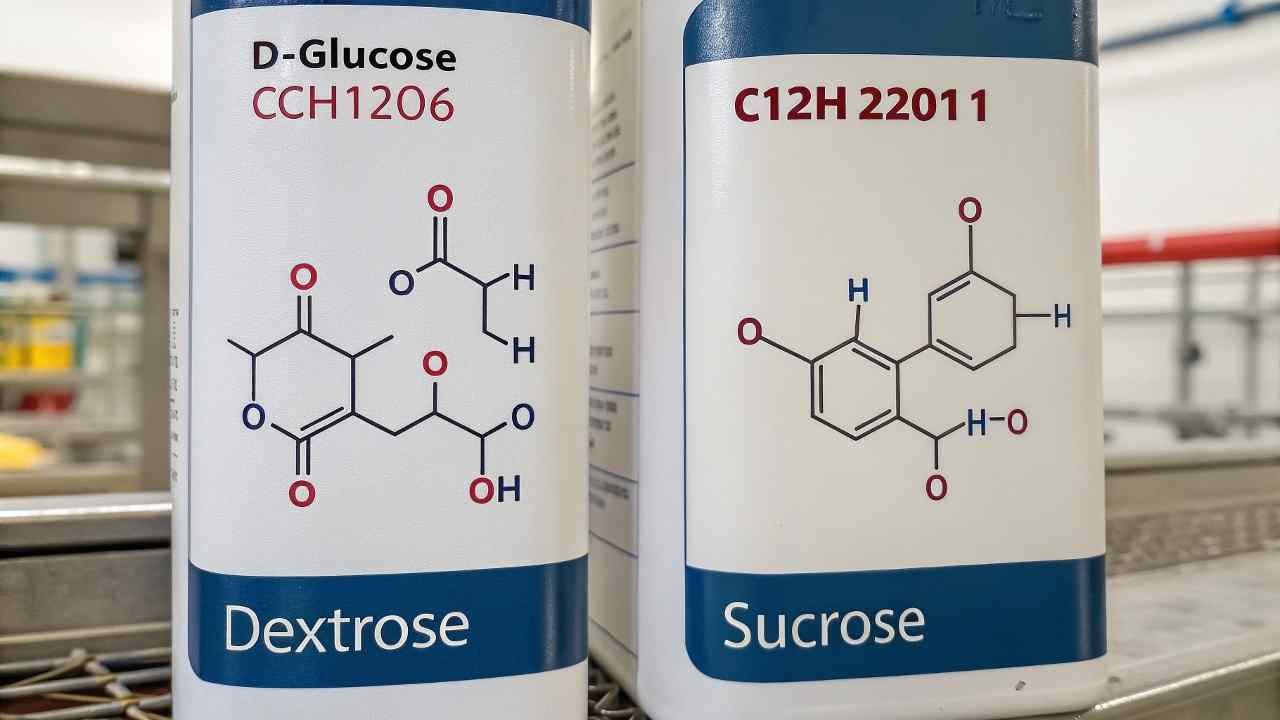
This basic structural difference – one sugar unit versus two linked units – dictates their properties. Dextrose is just glucose. Sucrose needs to be broken down into glucose and fructose during digestion.
Key Chemical & Functional Differences:
- Structure: Monosaccharide (dextrose) vs. Disaccharide (sucrose).
- Composition: Dextrose = Glucose. Sucrose = Glucose + Fructose.
- Sweetness: Dextrose is less sweet (~70-80%) than sucrose (100%).
- Reducing Sugar: Dextrose is a reducing sugar5, enabling Maillard browning. Sucrose is not (unless broken down).
- Freezing Point: Dextrose lowers it more effectively per unit weight (good for ice cream).
| Feature | Dextrose (Glucose) | Sucrose (Table Sugar) | Key Distinction |
|---|---|---|---|
| Type | Monosaccharide | Disaccharide | Structure (1 vs 2) |
| Reducing Sugar? | Yes | No | Browning potential |
| Sweetness | Lower (~75%) | Higher (100%) | Taste intensity |
Understanding these chemical distinctions is essential for food technologists in choosing the right sugar for a specific function and for suppliers in ensuring that we provide precisely what our clients need for their formulations.
In which common food categories might consumers find dextrose listed?
Curious where you're most likely to encounter dextrose on an ingredient list? Want to know which types of foods commonly use it? Let's list the main categories.
Dextrose appears frequently in baked goods (bread, cookies), drinks (sports drinks), candies, processed meats (sausages), ice cream, sauces (ketchup), dressings, and snacks.
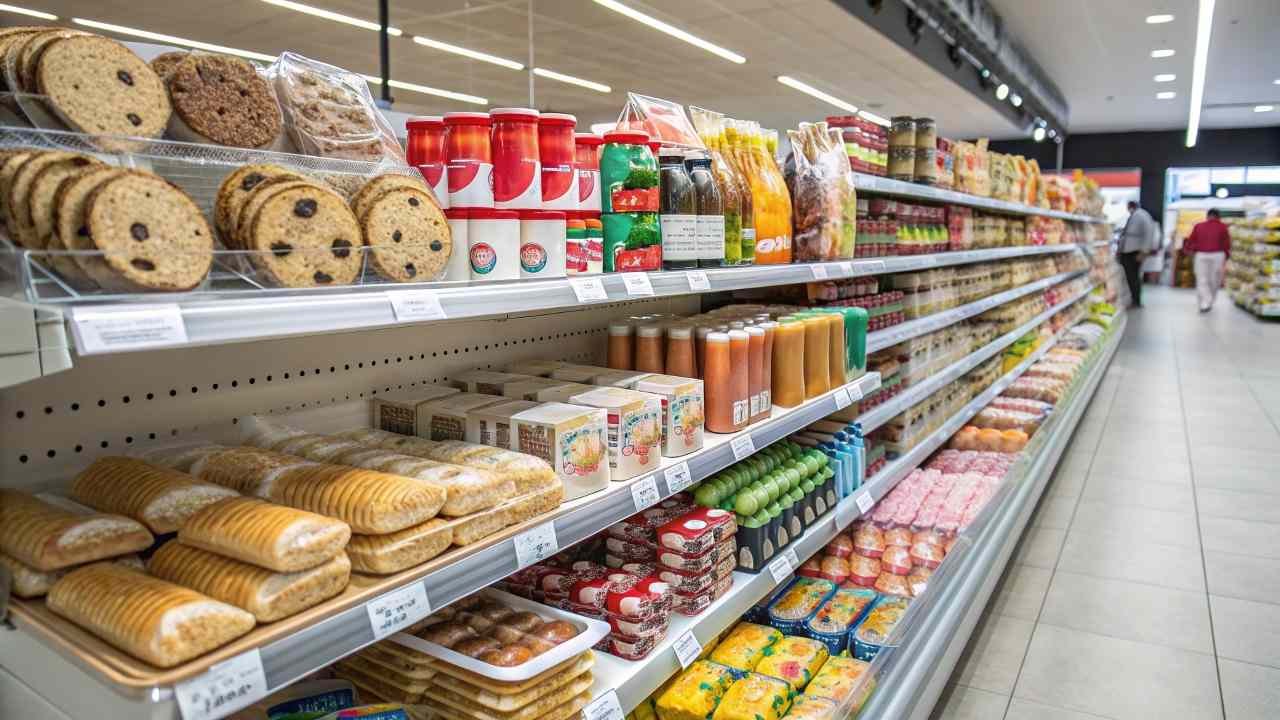
Common Food Categories Using Dextrose:
| Category | Common Examples | Primary Functions Used |
|---|---|---|
| Baked Goods | Bread, Cookies, Cakes, Crackers | Fermentation, Browning, Sweetness, Texture |
| Beverages | Sports Drinks, Powdered Mixes | Energy Source, Sweetness, Body |
| Confectionery | Candies, Gum, Frostings | Sweetness, Crystallization Control, Texture |
| Processed Meats | Sausages, Ham, Bacon | Flavor Balance, Curing Aid, Browning |
| Dairy Products | Ice Cream, Frozen Desserts | Freezing Point Depression, Sweetness, Texture |
| Sauces & Condiments | Ketchup, BBQ Sauce, Dressings | Sweetness, Body, Flavor Balance |
| Snack Foods | Chips (coatings), Pretzels | Flavor, Browning |
Its widespread use across these categories underscores dextrose's importance as a functional ingredient in the modern food supply chain.
Conclusion
In essence, dextrose is simply D-glucose, usually made from corn starch. It's vital in food for its sweetness, browning ability, texture improvement, fermentation fuel, and cost-effectiveness.
-
Learn about the transformation of corn starch into dextrose powder and its applications in various industries. ↩
-
Explore this link to understand the significance of dextrose powder in food production and its benefits. ↩
-
Exploring the role of enzymes in industry can reveal their importance in improving efficiency and sustainability. ↩
-
Exploring the health effects of HFCS can provide insights into its impact on diet and health, helping you make better food choices. ↩
-
Understanding reducing sugars is crucial for grasping their role in food chemistry, especially in processes like browning. ↩

